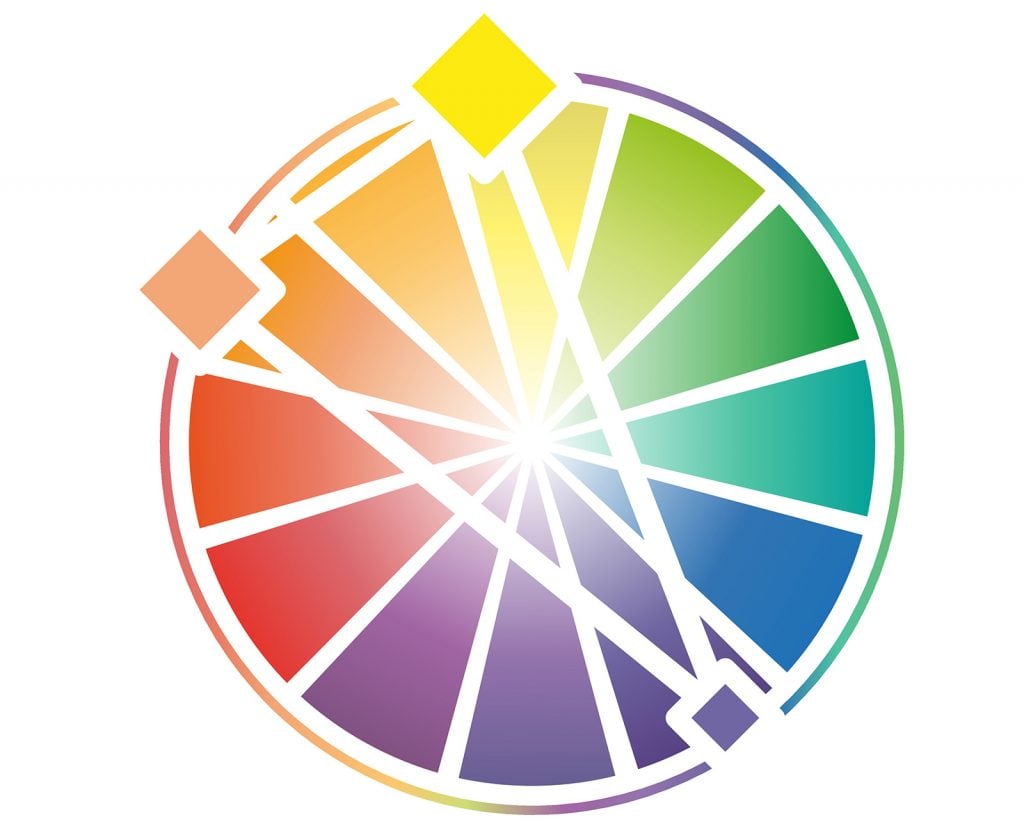Difference Between a Complementary and Split Complementary Color Scheme in Art

Although colors are a office of our daily lives, at that place are many variations to them and their uses that not everyone may take advantage of it. Take divide-complementary colors, for example. There are many fun and interesting ways y'all can use them to spruce up your painting, decorating skills, graphic designs, and more.
Let's have a closer expect at the carve up-complementary color scheme to help yous empathize what it is and the all-time fashion you lot can use the colors involved.
What Is a Carve up-Complementary Color Scheme?
A divide-complementary color scheme is known to be a variation of a complementary colour scheme. Only rather than existence a mixture of ii colors, split-complementary colors comprise a combination of three colors.
In guild to get a split-complementary color, you have to mix together 1 primary colour and two colors adjacent to its complement. While complementary colors tend to wait dull, dissever-complementary colors are used well for contrast purposes.
How to Determine Which Colors Are Dissever-Complementary

The best way to detect out what colors are split-complementary is to look at the colour wheel. A typical wheel contains 12 main colors including primary, secondary and third colors.
When figuring out split-complementary colors, yous want to offset out with a base color. From in that location, you combine it with two colors that sit directly adjacent to its complementary color without choosing the complementary color itself.
To utilise an case, permit'due south say you have orange. You'll combine it with blue-purple and blue-light-green to get a separate-complementary color.
Split-Complementary Color Schemes

At that place are 12 basic split-complementary color schemes you tin can work with:
Red + Blue-Greenish + Yellowish-Green
Orange + Blue-Regal + Bluish-Light-green
Red-Orange + Blue + Green
Red-Purple + Yellowish + Green
Yellowish-Orange + Purple + Bluish
Xanthous-Green + Cerise + Purple
Yellowish + Bluish-Royal + Reddish-Purple
Green + Ruby-red-Orange + Red-Purple
Blue + Red-Orangish + Yellow-Orange
Blueish-Light-green + Orange + Red
Blue-Royal + Xanthous + Orange
Imperial + Yellow-Orange + Yellow-Light-green
Best Ways to Use Divide-Complementary Colors

Since split-complementary colors incorporate a mixup of colors that don't initially announced to work well together, you might fall into the trap of creating something that's busy rather than effective.
Equally you're figuring out how to contain this detail color scheme into your fine art, wearing apparel, decorating, etc., it can be a skilful thought to look at which color in the combination is the strongest or the nearly dominant one.
So, if you take yellowish , blue-purple , and red-purple , the latter pair will exist dominant over yellowish. You may want to consider utilizing more of those two instead.
Say you are painting a room in your house. Much of the focus can exist on using a mixture of blue-purple and red-majestic. As for yellow, it can work well equally an accent colour. Mayhap you tin can use the hue on the trim of the wall. Or mayhap you can use information technology in terms of décor added to the room from wall hangings or piece of furniture.
You can also utilize a split-complementary color scheme to spruce up a child's playroom or sleeping room. Let's take bluish as our base color, and when you utilize the likes of red-orange and yellow-orangish , you can give the room a brighter, more open appearance. This can work out well through wallpaper, paint or other items placed in the room.
Separate-complementary colors as well work well when information technology comes to quilts to create a pattern that boldly stands out. Y'all may even want to apply them when coming up with a floral system by utilizing various flowers to create a beautiful display.
This colour scheme might work exceptionally well when it comes to artwork. Whether you're creating a portrait or landscape piece, careful utilize of split-complementary colors tin can add together the correct corporeality of contrast you demand to bring more life to your work.
Cautions Well-nigh Using Split up-Complementary Colors

As touched on earlier, carve up-complementary colors can create something that's also loud and over-the-top to the indicate that your original colour scheme becomes lost.
What you can practice to avert that pitfall is to not overdo information technology with the one hue that stands out in the incorrect mode, compared to the other ii colors that seem to naturally match amend with one another. You don't want to lose the overall distinction between them.
Thankfully, it does take a bit of effort to utilise split-complementary colors in the incorrect manner. It's why it'southward and so common for outset artists to focus on this colour scheme since it's rather easy to utilize.
So, in one case you notice your split-complementary color scheme that best suits your needs, take intendance of which pair matches better and from at that place, you can steadily add in the other color to build off them and create that much-needed contrast.
Source: https://www.color-meanings.com/split-complementary-colors/
0 Response to "Difference Between a Complementary and Split Complementary Color Scheme in Art"
Mag-post ng isang Komento